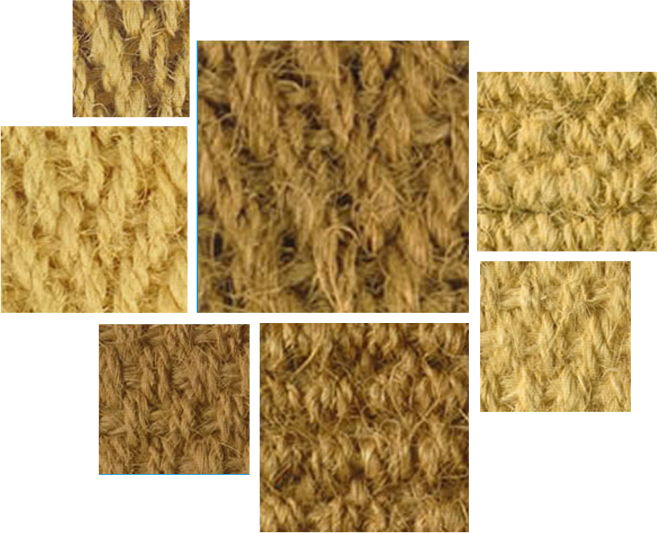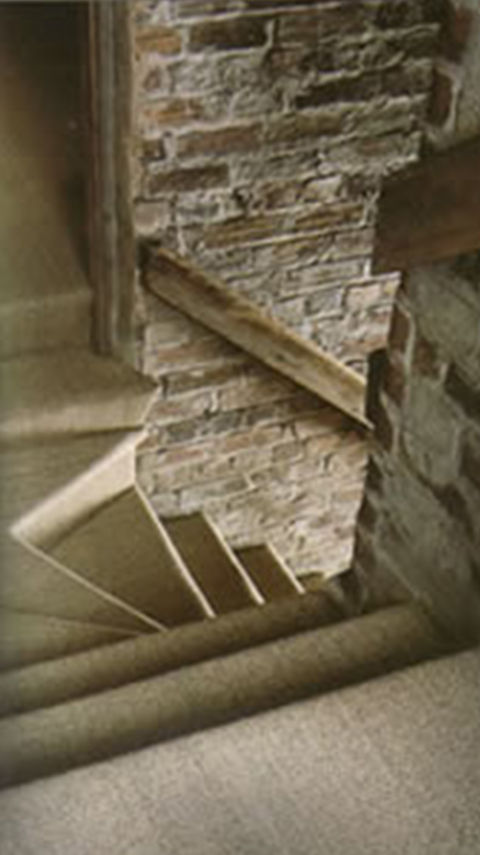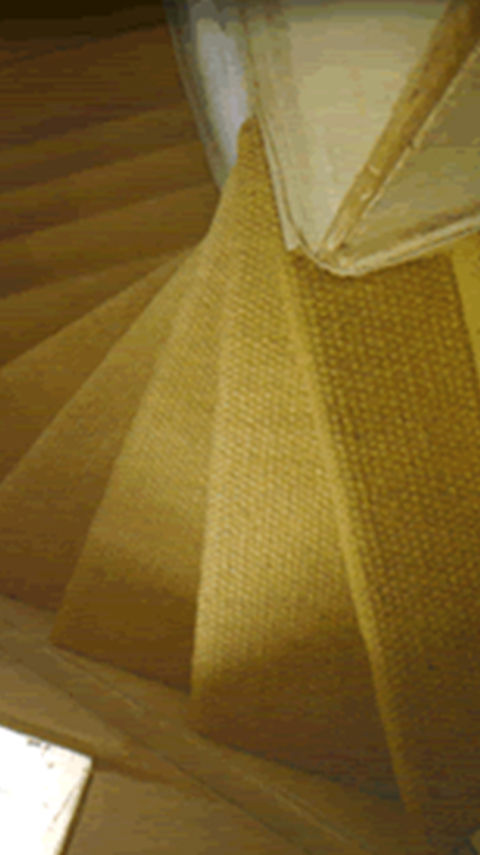Natural Coir Floor Covering
A Buyers Guide
Coir maybe the most popular natural plant floor covering owing to its
favourable price. Experience of selling natural floor coverings sees many sisal and seagrass enquiries result in coir sales when the price comparison comes to light.
It is coarser than sisal - think of what rubbing your hands against a
coconut would feel like to get an approximation of its character. It is very rustic in appearance and comes in the popular panama,
herringbone and boucle weaves.
Whilst it is naturally straw or rush coloured, coir is bleached to good effect to produce a very clean, light colour with a pale
yellowish hue. Accurate bleaching can produce several tones
between the natural and bleached looks.


Most people think of it as harder wearing than carpet, but again, I don't think that this is true. It is susceptible to wear through in high wear places like in front of the sofa (called TV or sofa shuffle in the trade) or high traffic walkways.
It is also pretty unforgiving of being disturbed after fitting and frays easily around the edges and around radiator pipes. My advice would be to choose carpet if you have a floor that "demands" access to pipes and wires or if (you're anything like me) you make changes often to walls and fittings!
Natural walk throughs can show threadbare patches after time, although proper fitting and correct urethane foam type underlay will reduce the likelihood of this. Once it is damaged, there is no chance of successfully patching it.
Whilst coir is quoted as being a water resistant fibre I can assure anybody thinking of using it that it isn't - it may not perish if it gets a soaking, but the staining will be severe (I said severe). Forget the bathroom or kitchen and make sure you have it sprayed with Intec protective treatment for otherwise acceptable areas.
It's natural and bleached shades will produce very pleasing warm colourways that are a delight to live with...that delight does not spread to lying around on it however, as it is the coarsest natural plant floor covering (of them all!)
and hence is the undisputed king of carpet burns.
It will always prove a talking point at dinner parties and will set the tone for designer style interiors without breaking the bank. It is THE floor covering to compliment textures like brick walls or stripped timber.
As can be seen in the photos on this page, coir is fantastic for stairs and provides all the friction you'll ever need for safety.
It is laid on underlay and gripper for fixing to stairways.
picture of coir laid on stairsI've pointed out the stain treatment already but there is one more clever way to minimise wear and soiling damage. If the coir leads directly to the outside via a front or back door, then consider using a coir door mat for wiping feet on. Completely in keeping with the coir flooring and available up to 2 metre wide for
streamlined porches and entrance halls.
Most people tend to have coir fitted on underlay, which needs to be the urethane type as opposed to ribbed rubber. Gripperods are appropriate because coir will sit in the gap between the gripper and wall - which prevents it from fraying (until it comes out of that gap). Don't even consider asking if your existing rubber underlay can be used under coir - not matter how good it still is.
Sticking (or stapling) the underlay to the floor, then sticking the coir to the underlay is the preferred method of laying, and probably the only one that gets a guarantee. Of course, you can have the coir glued straight to the floor without underlay which will give a firmer feel more conducive to moving chairs upon (think home office/dining).
Sticking is imperative because coir is even more prone to shrink and expand than sisal and is highly likely to end up in waves (please don't mistake this description as a poetic one!).
If you're choosing coir as an inexpensive "designer" floor covering, then seriously consider skipping the underlay and get it stuck straight to the floor. This will bring it back to a more attractive budget again (in case you needed cardio vascular massage when you got the fitted price).

Think in terms of these widths
Coir is primarily available in a 4.00 metre (13') width but it is important to note that width tolerances are a factor here. The Alternative Trading Company state 4.00 metre widths with the caveat that this could be plus or minus 1%.
Crucial Trading do it differently, they state the width as sold at 3.94 metres minimum (although in practice we know it is often wider than this). Some of the natural colours are also sold as 5.00 metres (16'5").
The Alternative Flooring Company offer a 2.00 metre width (6'6") which is cut down from 4.00 metre widths. This means that there will inevitably be one salvage edge missing.
Coir fibres are harvested from coconuts though not as you know them. What we see in the supermarkets is actually only a small part of the coconut.
For a more detailed explanation of how coir fibre is extracted from the complete coconut and then spun/woven into threads see this coir article.
Amazingly, even the vast acres of commercially made coir flooring come from "brown" coir fibres produced by hand. Nearly all of the flooring grade fibres are produced in India, being beaten with stones as part of the process.
AND, if that's still not enough facts to satisfy you coir and its production is VERY green and environmentally safe, then consider this:
> humans still harvest large quantities of coconuts and split the husks even though they are only 10% as efficient as machines
> monkies are still trained to get the coconuts down from the palm trees!
Unlike other cellulose based fibres like cotton, coir has a higher percentage of lignin which makes it stiffer and tougher. The shorter fibres are seperated from the longer flooring grade fibres and are set aside for mattress filling.

